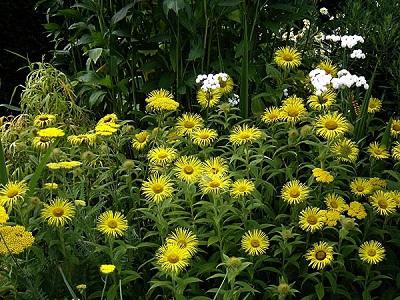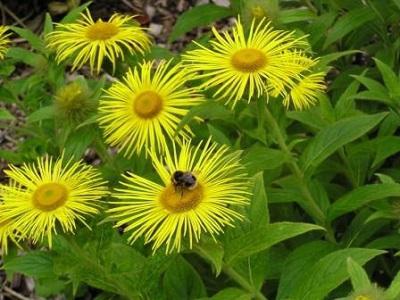Elecampane belongs to the family Astrovia. This plant is grassy, perennial, growing in the form of bushes. It blooms in the second half of summer with orange or yellow single flowers, as well as collected in corymbose or racemose inflorescences. The leaves of elecampane are oblong and pointed at the ends, and the stem is straight and fleshy. This plant is common in Central Asia, the European part of Russia, Western Siberia and the Urals. It grows mainly in meadows, near reservoirs, in ditches and quarries.

In Russia, elecampane began to be used for a long time "against nine ailments." But the roots of elecampane help not only with nine diseases, they are used much more widely. This plant also has many other names. This is alanthus, yellow, divosil, elenina grass, doubt, marvelous, wild sunflower. Elecampane roots are used as medicinal raw materials, they are harvested in the fall. To do this, select plants no older than three years, the stem of which is straight and tall. They are dug up, cleaned of soil and cut off the ground part. Then the roots are washed, cut into small pieces and dried for several days directly in the air.

Elecampane roots contain substances such as polysaccharides, inulinen and inulin, some alkaloids, essential oil, saponins and vitamin E. These roots have a spicy burning and bitter taste and a peculiar smell. Elecampane improves digestion, stimulates appetite, normalizes the secretory function of the intestines and stomach, and improves metabolism. It is also a good anthelmintic, diaphoretic, diuretic and astringent. Elecampane also has antiseptic, expectorant, soothing and anti-inflammatory properties.
Traditional medicine has long used elecampane root for delayed menstruation, as well as for painful and irregular menstruation. He was also always considered an effective remedy for exudative diathesis, non-specific arthritis and gout. Elecampane is used for epilepsy, headaches and palpitations. It can be used as a hemostatic agent. And for external use, elecampane is used to make decoctions and infusions that contribute to the treatment of eczema, difficult wounds, neurodermatitis, hemorrhoids and gum disease.
The infusion of elecampane is prepared as follows: a teaspoon of dry and chopped roots is poured into a glass of boiling water. Then the mixture is infused for eight hours and filtered. This infusion can be taken four times a day for a quarter cup, as a stomachic and expectorant, an hour before meals. With bronchitis, flu and other similar diseases, a decoction of elecampane root will help. To cook it, you need a glass of boiling water to pour a spoonful of crushed root. Then this mixture should be heated for half an hour in a boiling water bath, stirring constantly. Then the broth should be cooled and filtered. It is taken an hour before meals 2-3 times a day in doses of half a glass.

Also, tincture is prepared from elecampane. For this, the dry roots of the plant insist in vodka for 10-12 days. And if the crushed roots of elecampane pour half a liter of port and cook for 10 minutes, you get an elixir. It will be an excellent firming and tonic with a general breakdown. Such an elixir is taken before meals 2-3 times a day in portions of 50 milliliters. If tormented heartburn, then you can take elecampane powder in small doses. These are the same ground roots and rhizomes of this plant. An ointment and a decoction for baths are also prepared from these roots, which help with skin diseases.